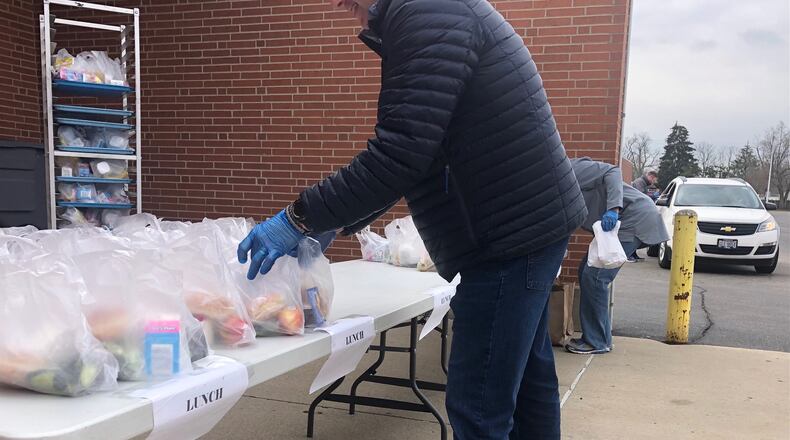Benefits from remote learning in October and November will be delivered by early to mid-February. Later benefits will be delivered on a two-month lag (December benefits by the end of February; January benefits by the end of March, etc.)
“Because accessing nutritious food is critical during the pandemic, we are thrilled to help Ohio families alleviate a major source of stress during these unprecedented times,” ODJFS Director Kimberly Henderson said.
State officials already have a database of PK-12 students receiving free or reduced-price school meals, and they get information on the number of remote-learning days from each school, to calculate each person’s benefit amount.
Families won’t qualify for the benefit if they haven’t applied for and been approved for free or reduced-price meals this school year. But school districts are still working with families. Mad River school officials asked qualifying families to contact their school Monday to apply.
Students qualify for free lunch if their household income is below 130% of the federal poverty line (about $27,500 for a single parent with two kids). Reduced-price lunch is available for those below 185% of poverty line (about $39,500 for single parent with two kids).
Families who also receive Supplemental Nutrition Assistance Program benefits (SNAP, or food stamps), will see the money added to their existing Ohio Direction card. For non-SNAP families, ODJFS will mail them a pre-loaded card, then add any future benefits onto that same card.
Officials with Dayton and Xenia schools urged all families to verify that their mailing address is up-to-date with their school, as the state will mail the cards to the address on file with the school.
P-EBT benefits can be used to buy most food products, according to ODJFS, with the exception of alcoholic beverages, vitamins/medicines, and hot food made to be eaten immediately (restaurants, etc.).
Because of the COVID-19 pandemic, school breakfast and lunch has already been made free throughout 2020-21 for all students whose schools participate in the National School Lunch Program.
Most local schools have been offering some way for remote-learning families to pick up meal packages, either daily, or via a weekly pickup of several meals. But not all families are able to do so, because of transportation, scheduling or other issues. All families who qualify for the P-EBT benefit will receive it, regardless of whether they’ve picked up lunches from their school or not.
“There are still limitations regardless of whether we are serving everyone,” said Stacie Pabst, supervisor of food and nutrition services for Kettering schools. “Some families cannot pick up, some students don’t like the food, others don’t have the means to reheat at home.”
In Northmont schools, remote families can pick up meals at any elementary building from 9:30 to 10 a.m. each weekday, or get them via bus stop delivery on Fridays. Kettering also offers pickup at all schools. Dayton, which is fully remote, delivers meals daily to students’ homes, after parents sign up by phone or online at https://www.dpsrestart.com/student-meals.
ODJFS said the first round of P-EBT benefits last spring delivered about $260 million to 870,000 Ohio children. The second round, in the fall, was $59 million to help 510,000 children.
About the Author

